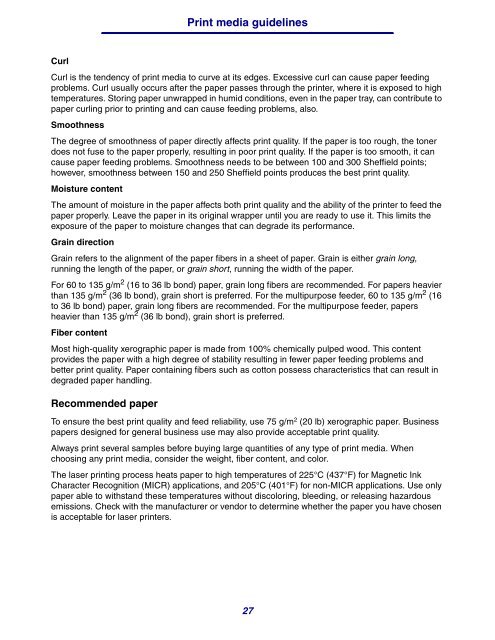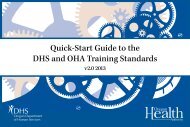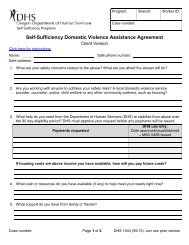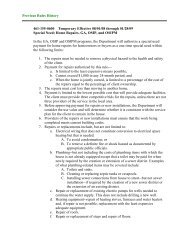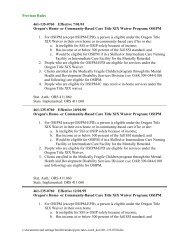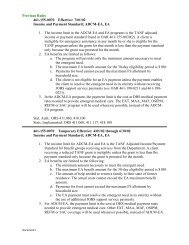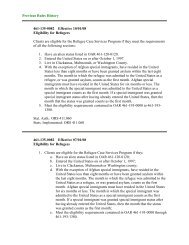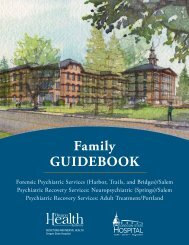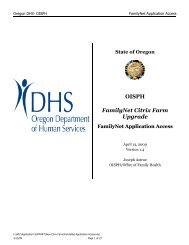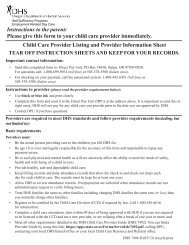Download the ST9340 Printer Reference Guide
Download the ST9340 Printer Reference Guide
Download the ST9340 Printer Reference Guide
Create successful ePaper yourself
Turn your PDF publications into a flip-book with our unique Google optimized e-Paper software.
Curl<br />
Print media guidelines<br />
Curl is <strong>the</strong> tendency of print media to curve at its edges. Excessive curl can cause paper feeding<br />
problems. Curl usually occurs after <strong>the</strong> paper passes through <strong>the</strong> printer, where it is exposed to high<br />
temperatures. Storing paper unwrapped in humid conditions, even in <strong>the</strong> paper tray, can contribute to<br />
paper curling prior to printing and can cause feeding problems, also.<br />
Smoothness<br />
The degree of smoothness of paper directly affects print quality. If <strong>the</strong> paper is too rough, <strong>the</strong> toner<br />
does not fuse to <strong>the</strong> paper properly, resulting in poor print quality. If <strong>the</strong> paper is too smooth, it can<br />
cause paper feeding problems. Smoothness needs to be between 100 and 300 Sheffield points;<br />
however, smoothness between 150 and 250 Sheffield points produces <strong>the</strong> best print quality.<br />
Moisture content<br />
The amount of moisture in <strong>the</strong> paper affects both print quality and <strong>the</strong> ability of <strong>the</strong> printer to feed <strong>the</strong><br />
paper properly. Leave <strong>the</strong> paper in its original wrapper until you are ready to use it. This limits <strong>the</strong><br />
exposure of <strong>the</strong> paper to moisture changes that can degrade its performance.<br />
Grain direction<br />
Grain refers to <strong>the</strong> alignment of <strong>the</strong> paper fibers in a sheet of paper. Grain is ei<strong>the</strong>r grain long,<br />
running <strong>the</strong> length of <strong>the</strong> paper, or grain short, running <strong>the</strong> width of <strong>the</strong> paper.<br />
For 60 to 135 g/m 2 (16 to 36 lb bond) paper, grain long fibers are recommended. For papers heavier<br />
than 135 g/m 2 (36 lb bond), grain short is preferred. For <strong>the</strong> multipurpose feeder, 60 to 135 g/m 2 (16<br />
to 36 lb bond) paper, grain long fibers are recommended. For <strong>the</strong> multipurpose feeder, papers<br />
heavier than 135 g/m 2 (36 lb bond), grain short is preferred.<br />
Fiber content<br />
Most high-quality xerographic paper is made from 100% chemically pulped wood. This content<br />
provides <strong>the</strong> paper with a high degree of stability resulting in fewer paper feeding problems and<br />
better print quality. Paper containing fibers such as cotton possess characteristics that can result in<br />
degraded paper handling.<br />
Recommended paper<br />
To ensure <strong>the</strong> best print quality and feed reliability, use 75 g/m 2 (20 lb) xerographic paper. Business<br />
papers designed for general business use may also provide acceptable print quality.<br />
Always print several samples before buying large quantities of any type of print media. When<br />
choosing any print media, consider <strong>the</strong> weight, fiber content, and color.<br />
The laser printing process heats paper to high temperatures of 225°C (437°F) for Magnetic Ink<br />
Character Recognition (MICR) applications, and 205°C (401°F) for non-MICR applications. Use only<br />
paper able to withstand <strong>the</strong>se temperatures without discoloring, bleeding, or releasing hazardous<br />
emissions. Check with <strong>the</strong> manufacturer or vendor to determine whe<strong>the</strong>r <strong>the</strong> paper you have chosen<br />
is acceptable for laser printers.<br />
27


